DC Comics is trying something new. In the wake of their Rebirth initiative, the publisher has rapidly expanded its content to include diverse new imprints such as Young Animal, Wildstorm, Black Label, Ink, and Zoom. As their lineup expands, it can be hard to figure out what to pick up each week. That’s what the Comics Beat managing editor Alex Lu, entertainment editor Kyle Pinion, and contributor Louie Hlad are here to help you with.
THIS WEEK: Alex reviews the official start to Brian Bendis’ Superman ongoing and looks at the pastiche goofball of a series, Plastic Man #2
Note: the reviews below contain **spoilers**. If you want a quick, spoiler-free buy/pass recommendation on the comics in question, check out the bottom of the article for our verdict.
 Superman #1
Superman #1
Writer: Brian Michael Bendis
Penciller: Ivan Reis
Inker: Joe Prado
Colorist: Alex Sinclair
Letterer: Josh Reed
While, as a fan of Peter Tomasi’s and Patrick Gleason’s dad Superman, I wasn’t as high on the Man of Steel miniseries as Kyle was, I appreciated how deftly Brian Michael Bendis and his artistic collaborators set up their vision of Superman. Over the course of the six issue limited series, we saw Clark Kent’s slate wiped clean. Lois and Jon left Earth to travel the stars with Jor-El, Superman’s dad, in search of Jon’s destiny. The Daily Planet and its hive of writers, a part of Clark’s life that we hadn’t seen much of in recent years, suddenly found itself in the spotlight once again. A mysterious rash of arsons brought Superman in contact with a strongheaded new deputy fire chief who promises to play a major role in Clark’s life moving forward. A powerful foe, Rogol Zaar, recontextualized the death of Superman’s homeworld and destroyed Superman’s Fortress of Solitude before finding himself banished to the Phantom Zone for his actions. Man of Steel left a few dangling threads for Bendis and his compatriots to pursue as they came to Superman #1, but all of them were new. The older parts of Superman’s life, it seems, had been swept away.
How curious then, that Superman #1 drops most of its new ideas in order to see Superman try to go back to where we found him as Man of Steel began.
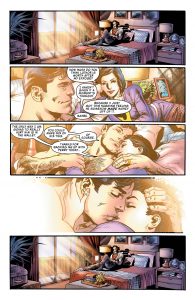
As Superman #1 begins, we find Clark reflecting on his missing wife and son. He aches to find them– traversing into the depths of space in pursuit of the ship that they left Earth with Jor-El in. After an abbreviated tussle with the Dominator armada, Superman finds himself back on Earth, simply thinking about his family rather than actively pursuing them. This introspective Superman feels different than the man of action that we’re used to seeing, but not out of character in the slightest. Ivan Reis employs a simple yet clever page structure to two pages of flashbacks at the Kent household. In the first, we see a lovely look at Superman’s role as a husband to Lois Lane sandwiched between two shots of Superman lying still in their marital bed. Then we get another flashback of Superman playing a fatherly role to Jon sandwiched between two shots of Clark sitting alone at the family kitchen table. Colorist Alex Sinclair bathes the flashbacks in ethereal sunlight while shading Superman’s present day reality in darker shades, contrasting the idealistic memories of Clark’s past against his present loneliness. Its a testament to the Superman creative team’s storytelling skill that they manage to pack so much character work into such a small amount of space. And it makes sense for Clark to mourn the absence of his family, even if he’s been promised that they will safely return.
Yet, while I quite enjoy the look at this particular part of Superman’s past, as Superman #1 goes on I cannot help but feel like the book is actively trying to step back into some of the plotlines it seemed to have wrapped during Man of Steel. It’s clear that one of Superman’s goals will now be to reunite his family. We get a scene where Superman builds himself a new Fortress of Solitude in a way that gently recalls Dr. Manhattan raising the glass clockwork structure on Mars in Watchmen, undoing a lot of the damage done by Rogol Zaar with little consequence (beyond the obviously tragic and irreversible destruction of the Bottled City of Kandor). By the end of this issue, we’re even promised that Rogol Zaar himself will be coming back. Meanwhile, we get almost no mention of the arson plotline after it was positioned as Man of Steel #6‘s major cliffhanger and the action at the Daily Planet almost entirely recedes into the background again. While this run on Superman is still very young and feels quite fresh, I cannot help but feel like looking towards past plotlines instead of boldly forging forward is the wrong move for Superman at this time.
Of course, for what it is, Superman #1 reads quite smoothly. Reis, as inked by Joe Prado, does wonderful work throughout the book. Everything from the big epic panel we get as the Justice League mourns the loss of the original Fortress of Solitude to the quiet sequence where Clark runs into a Daily Planet supply closet and an intern rolls his eyes is rendered with aplomb. There’s a gentle smoothness to Reis’ work as inked by Prado that makes the book look comforting without sacrificing its ability to inspire awe in the reader. Proving that point, the scene where Superman raises a new Fortress of Solitude in the middle of the Bermuda Triangle is absolutely sublime.
And while we mostly return to old plots in Superman #1, we do get the seeds of a new conflict as well. There’s an extended sequence in the middle of this issue where Superman meets with Martian Manhunter, who has a proposition for the Man of Steel. The scene starts off in a lovely way as the two orphans of alien worlds connect over a newly discovered commonality in their tragic experiences. Then, however, things take a turn for the stranger as Martian Manhunter attempts to convince Superman that he should lead the world as the intergalatic community turns its eyes towards Earth. The world, as it is with its borders and walls, isn’t ready for this kind of attention according to Manhunter, but with Superman’s leadership, it could be.
This argument in of itself is generally decently reasoned and provides the sparks for an interesting moral conflict, but I think Bendis puts far too fine a point on things when he has Martian tell Superman that he should “take over all of [the world] and set it toward a future in which hope isn’t just an ideal…”. Superman takes umbrage with the word “take,” as do I. However, where Superman is responding to the words themselves I’m lambasting the notion that Martian Manhunter, considered to be the conscience of the Justice League and ever the diplomat, would use such provactive and inflammatory language to try and goad Superman into action. I don’t normally criticize books for things that are this minute, but Manhunter’s use of these words felt particularly out of character for me. This part of the exchange very clearly lays out the stakes for the conflict to come, but I can’t help but feel like this was a particularly clunky way to get to that point.
That said, for all my gripes, I enjoyed Superman #1 quite a bit. The artistic team is very clearly firing on all cylinders and while Bendis did make a pretty big slip up here in my opinion, his ear for dialog is generally strong throughout this title. I love reading Clark’s fights with a cantankerous and impatient Jon. I love reading the way the Justice League knows each other well enough to respond to one anothers’ thoughts before they’re even fully stated. If nothing else, Bendis knows how to make a fictional world feel lived in– and boy does it feel nice to come home to Metropolis once again.
Verdict: Browse, lean towards Buy
 Plastic Man #2
Plastic Man #2
Writer: Gail Simone
Artist: Adriana Melo
Colorist: Kelly Fitzpatrick
Letterer: Simon Bowland
I’m not going to lie: I know very little about Plastic Man. But honestly, can you blame me? I’ve been reading comics regularly for almost a decade now, but in that time Eel O’Brian has been a main character in precisely zero stories. Heck, in the New 52 universe, the character barely existed at all until late last year when he showed up as an…egg? All this to say that going into this new Plastic Man miniseries, I have had zero expectations besides a hope that the book maintains the sense of irreverent humor Plastic Man has built a reputation on. And two issues into the series, it looks like my hopes have not been misplaced.
In a lot of way, Plastic Man #2 seems like an anachronism. It doesn’t look, read, or feel like most of the comics we get today. Artist Adriana Melo renders every page of the book with exaggerated cartoonish glee, harkening back to a time where comics were less realistic and gritty. Colorist Kelly Fitzpatrick flattens her colors to match. The overall aesthetic of Eel O’Brian’s world feels more than a bit like a mobster movie (which his origin story kind of is), replete with physical humor and scripted jokes that alternate between evoking Animaniacs cartoons and Leisure Suit Larry games. The overall effect is that Plastic Man #2 feels like…well, honestly, the 90s. And not in the Dark Age of comics way but rather the Paul Dini one. There’s a sense of irreverence that pushes boundaries a bit, but is pulled back by a good heart that holds the core of the story together.
As to the actual story of Plastic Man #2: well, that’s a little complicated. In the first issue, we got a recap of the events that led to Eel O’Brian gaining his powerful elastic abilities. O’Brian’s visit to his past ultimately results in his being approached by an agent of Spyral that hopes to utilize Plastic Man’s relative anonymity as a hero in order to infiltrate an evil cabal that has itself infiltrated powerful groups around the world, including, it seems, the Justice League of America. This issue, however, takes a bit of a detour as Plastic Man spends his time looking for a kid named Pado Swakatoon who saved Eel’s life but was then left by him to die in the hands of MANBAT. This all ultimately does lead back to the cabal, but honestly, the more I think about the plot, the less I think it matters. The detours are the point of this take on Plastic Man because they’re where Gail Simone and her artistic compatriots can mine the most humor.
Indeed, in what other DC book are you going to find an extended opening sequence where the lead threatens potential kidnappers by turning himself into a cannon or crushing their cars as a tank? Where else will you find a lead who screams his existential tale of woe into a fast food drive in or see Batwoman repeat the words “slide trombone” (ew)? It’s all nonsense, but it’s very funny nonsense, so what else can you expect out of the slippery Plastic Man?
I think it makes sense that Plastic Man is clearly marked as a 6 issue miniseries. This sort of rapid fire non-sequitur humor would likely wear thin if the book ran much longer than that. But for what it is, Plastic Man is a good deal of fun assuming its sense of humor matches yours. It’s certainly well worth a look.
Verdict: Browse
 Round-Up
Round-Up
- Eternity Girl #5 releases today. As the penultimate release of the miniseries, the onus is on the title to bring things to a climax and even, perhaps, end the world as originally promised. Boy oh boy do we end up with a cool cliffhanger here in service of taking things up to eleven. Magdalene Visaggio, Sonny Liew, Chris Chuckry, and Todd Klein are firing on all cylinders here. I’ll be sad to see this series go next month.
- I’ve always had a soft spot for Hawkman. I love stories about reincarnation and star crossed loves. But honestly, this particular run on Hawkman, whose second issue releases today, has been exceeding all my expectations. It expands our conception of who Hawkman is and in this issue, sends him back in time to face one of his previous lives in combat and collaboration. It’s a very neat concept and I look forward to seeing where the series goes from here.
Miss any of our earlier reviews? Check out our full archive!


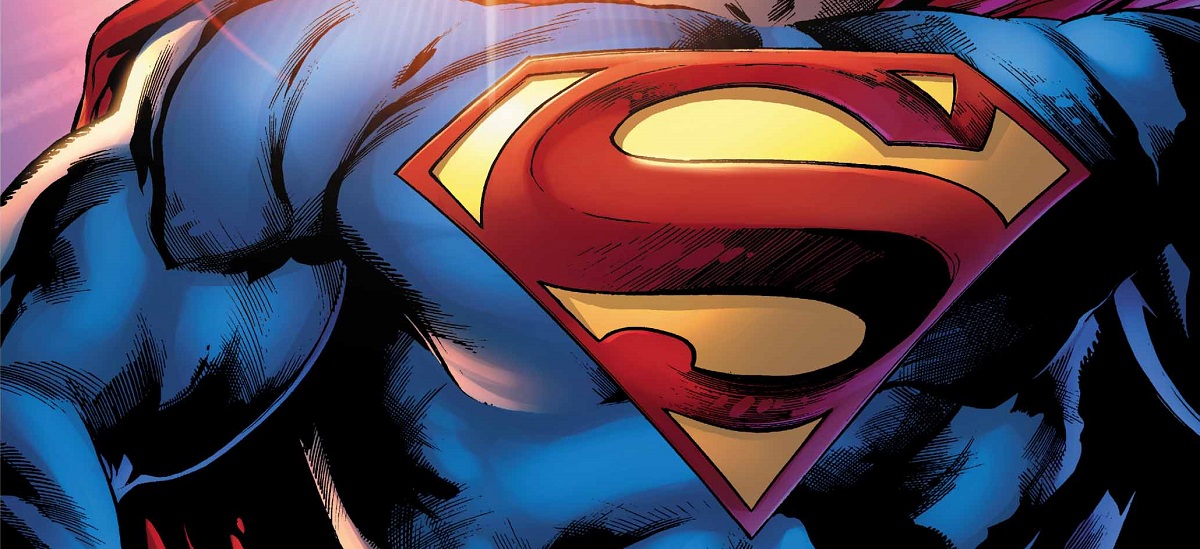
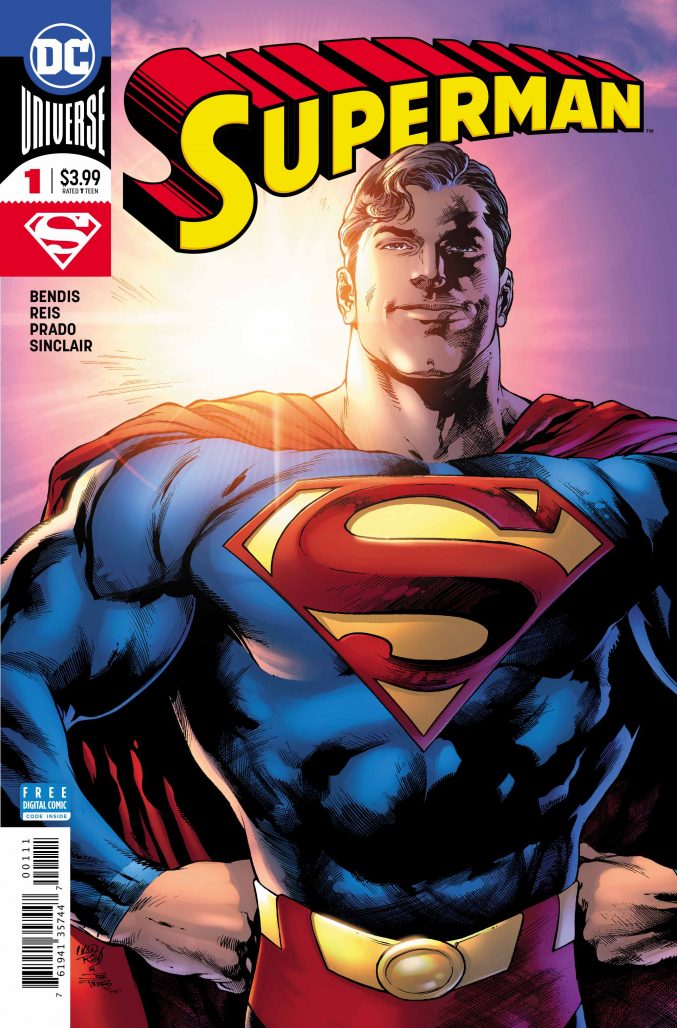
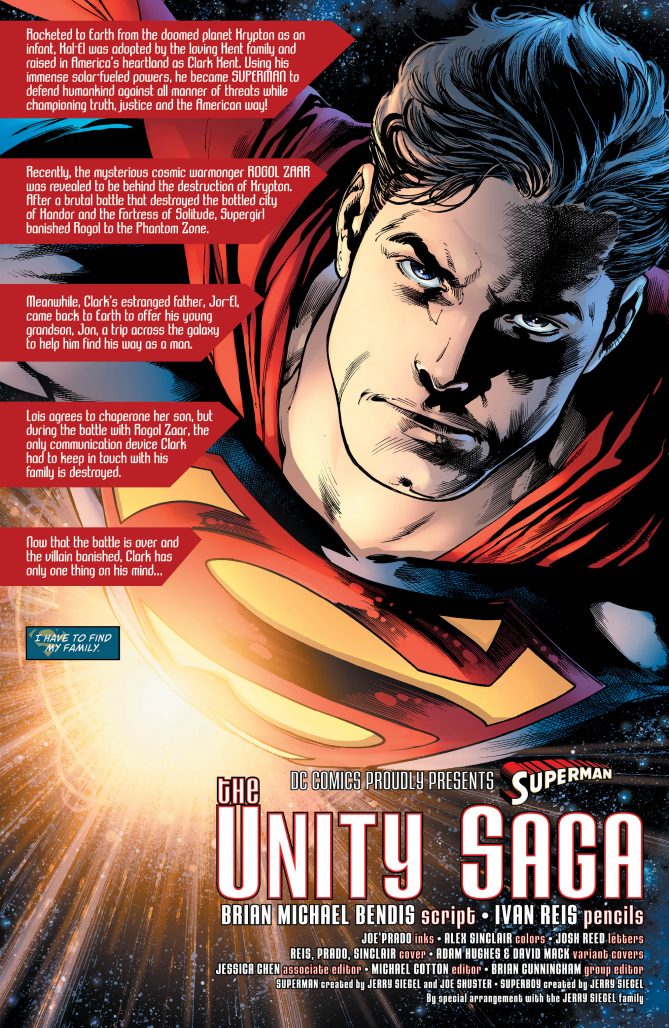
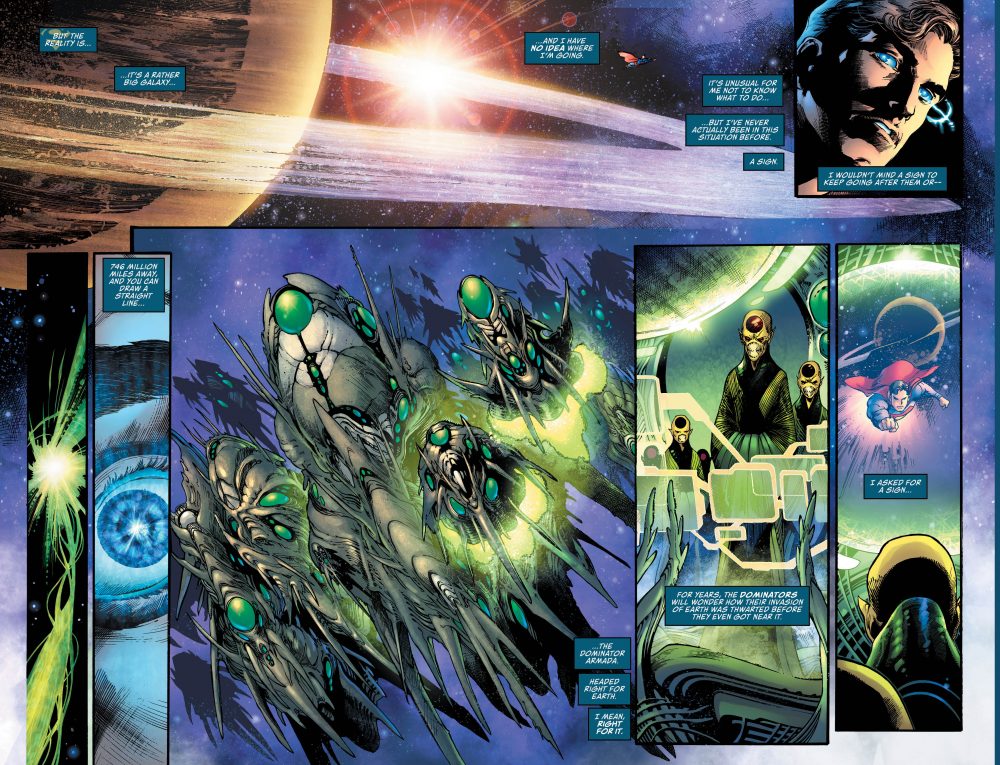
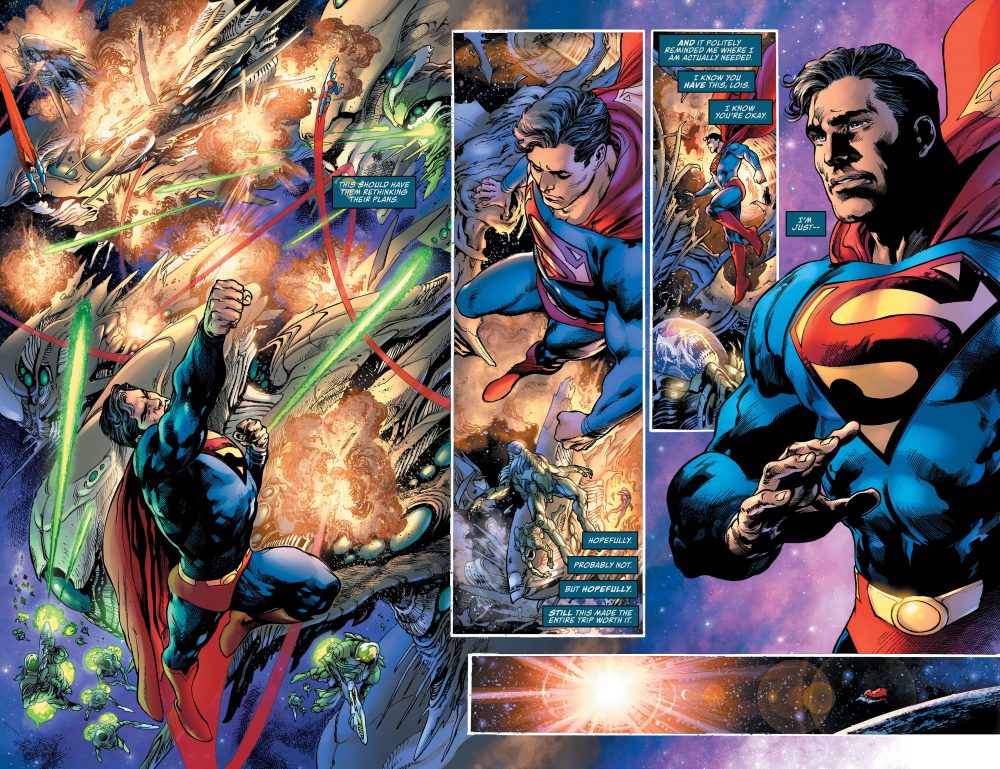
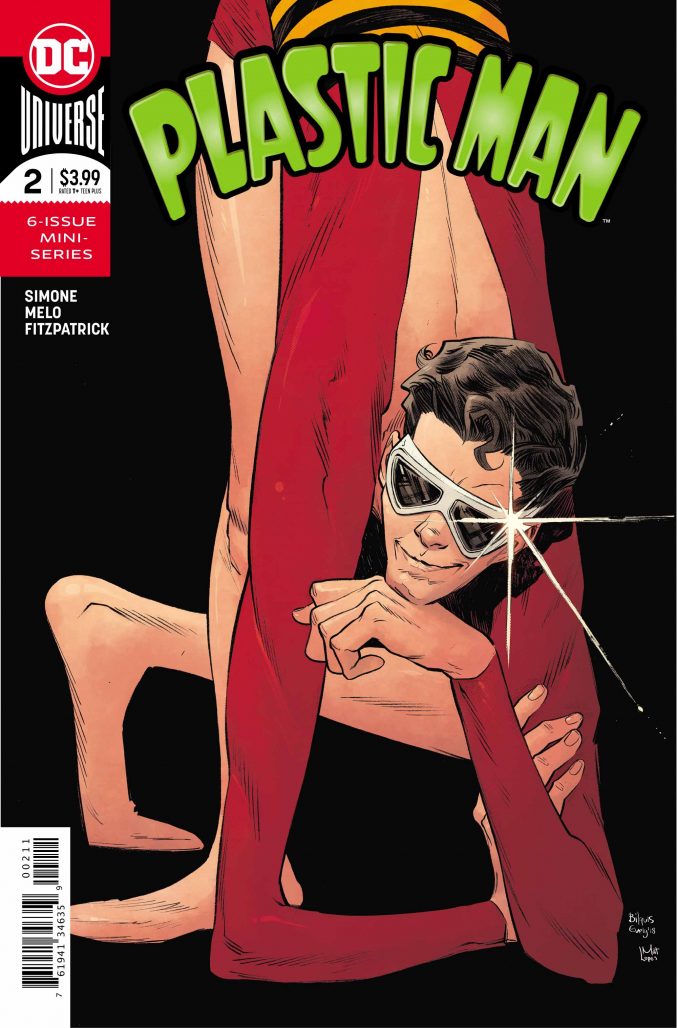
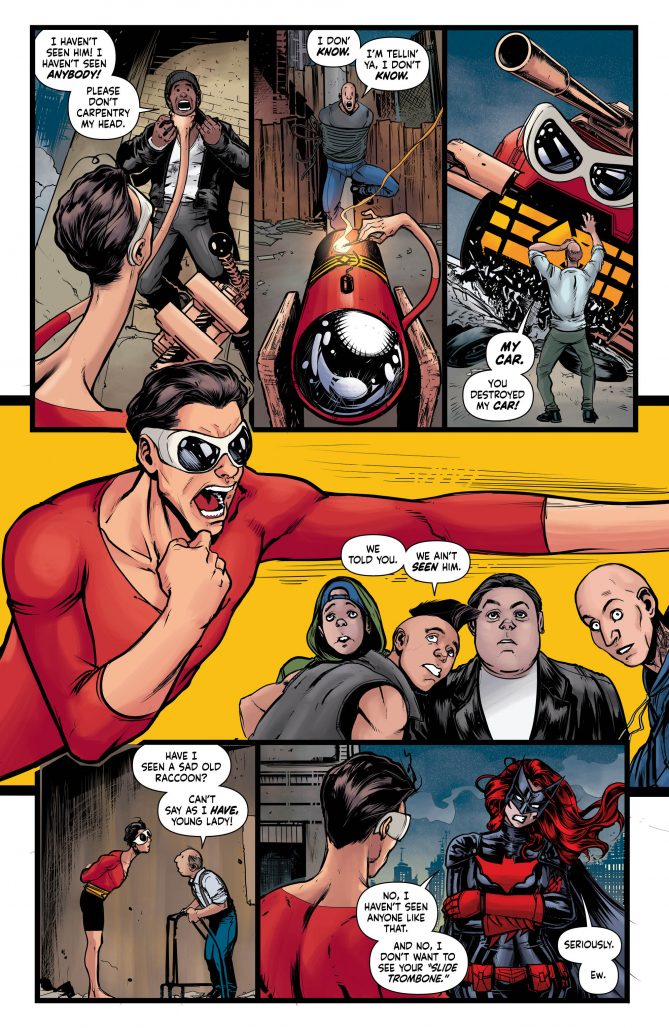
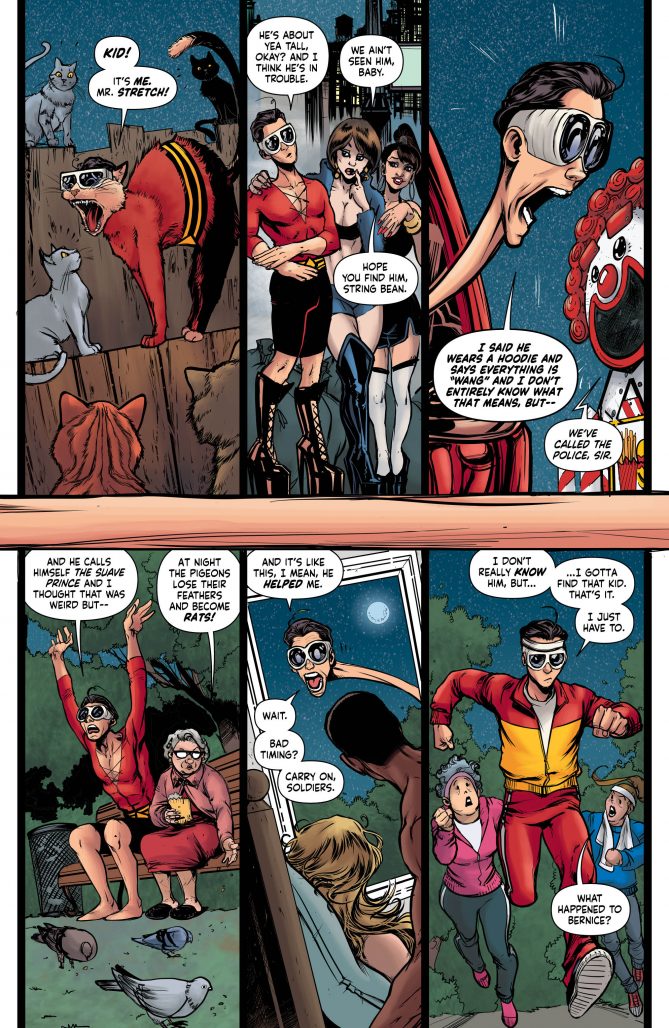
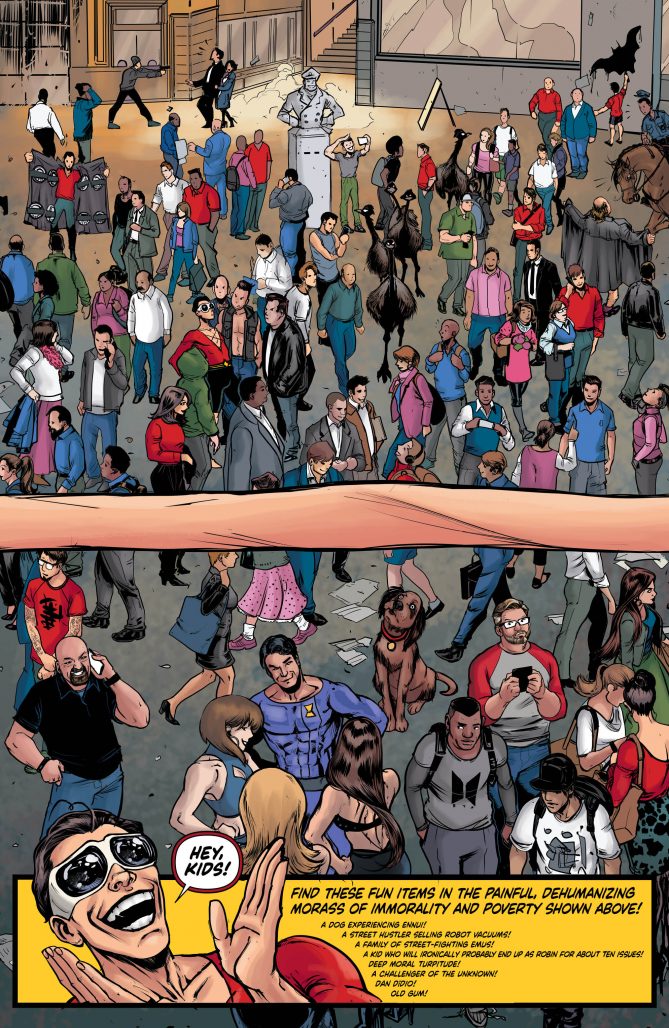
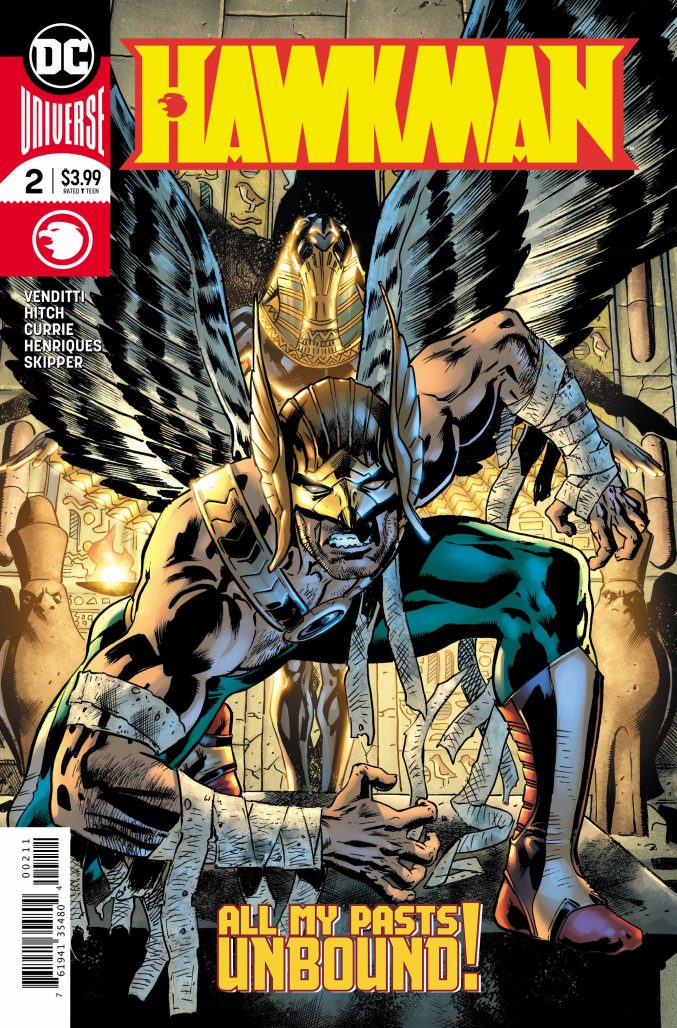





In fairness, I believe Bendis has said that Action Comics will focus on Metropolis and Clark Kent’s work at the Daily Planet, so you should find those story threads in that comic.
Comments are closed.